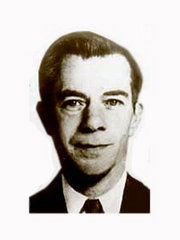Are sales presentations dead? In this age of Sales 2.0, it’s easy to get that impression. We’re told that buyers are better informed than ever, that they have already gone through more than half the buying process when they first engage us, and that no one likes to be “sold”.
If this is true, then it would seem there would no longer be any need for a sales professional to know how to deliver a compelling presentation. Maybe it’s a far better use of their time to master social media instead.
On the other hand, that news would be extremely surprising to many top sales professionals who have made their year—maybe even affected the trajectory of their careers—by succeeding in those all-important strategic presentations. What does strategic mean? Quite simply, it’s improving your position (or clinching the deal) by saying the right things to the right people at the right time in the sales process. As an example, a top executive from a major technology firm told me that when a sales team from a major PR firm presented to their top management, within two seconds of their leaving the room, the president said: “Hire them.”
Sales presentations are still crucial to success in the complex sales for several reasons.
- It’s true that your buyers are getting a lot of information from the internet and other sources, and we all know that the information we get on the internet is 100% reliable, right? Whether your buyers are misinformed, or have missed some important insights, often the only way to correct the discrepancy is to gain the attention of the right people early enough in the sales process to be a part of their decision-making conversations.
- Most complex sales don’t end with a single transaction. The sales team must remain closely involved with implementation and ongoing support to ensure that the customer achieves the best possible outcomes from their purchase decision. The sales presentation may be the only way for all the people involved in the decision to get to know and gain a level of comfort with the sales team. You may represent a company that has billions of dollars in assets, but to them you are the company.
- If done right, the strategic presentation is definitely not a one-way transmission of information. It’s a superb way to have an interactive dialogue with all the relevant stakeholders and share insights that lead to better solutions.
- According to research cited in The Art of Woo: Using Strategic Persuasion to Sell Your Ideas, important corporate decisions involve an average of eight people in the decision. Major purchasing decisions will require at least that many, so at some point someone will have to present to all of them together. Why shouldn’t it be you?
- Other research by the HR Chally Group found that salesperson effectiveness accounted for 39% of the buying decisions of 300,000 customers surveyed[1]. A presentation to a high level audience is the most direct and dramatic way of demonstrating your effectiveness.
- Another interesting insight from my interviews with senior-level decision makers is that while they are often not experts in the technologies they are asked to decide upon, they do pride themselves on their ability to read people. They welcome the presentation because it gives them an opportunity to “scratch the surface” in a presentation and gauge the competence of the person presenting to them.
Willie Sutton was a famous bank robber in the 1950s. When he was caught, supposedly a reporter asked him why he robbed banks. Willie replied: “That’s where the money is.” The same still applies to strategic sales presentations today, no matter what some pundits will tell you.
As part of my research for my forthcoming book, Strategic Sales Presentations, I interviewed dozens of senior level executives to understand how they perceive the presentations they receive from salespeople. One of the questions that really got most of them talking was “What are the top mistakes that you see salespeople making during presentations?” Here are the Top 10:
Try too hard to sell me. When you reach my level, you have been vetted by people in my organization whose opinions I trust, so make your presentation educational and factual. Teach me something new.
Talk too long. “By slide #2, most salespeople have already used up 75-80% of my patience and I’m looking for the exit.” Get to the point. On a related note, don’t use too many slides, especially about your corporate “story”. Sometimes even you look bored with it.
Ask me what keeps me awake at night. That’s one of the most overused questions in sales. You should already have a pretty good idea of my problems.
Be too sure that you know all about my problem already. This is the opposite extreme of the previous one. If you act like you know it all, we will push back and expose what you don’t know. Be humble and ask a lot of questions.
Not listen. Don’t be so wrapped up in getting your message out that you don’t listen to us. If we interrupt you to ask a question or say something, there is a pretty good reason for it.
Try to circumvent our buying process. “Don’t force your sales cycle on me.” On rare occasions, we will bend this rule, but you’d better have a damn good reason to do it. Also, “If you get in too easily to see me, that’s not a good sign. It means everyone else can too.”
Be too canned. We like to talk to real people who know our business. If you’re too slick or too “coiffed”, we’ll get suspicious.
Use “$75 words”. When you make something more complicated than it is, it “makes us think like you’re full of it.” On a related note, a CFO said that you should not use terms like ROI and payback unless you really know what they mean.
Bring too many people. Too many teams bring in many more people than are necessary. If they don’t have a reason for being there, or don’t play an active role, leave them home. If you have that many people to spare, I may end up paying too much.
Wear a Gator tie when selling to the University of Georgia. Yes, this actually happened. The big picture point is that you should know your customer and tailor your presentation to them. On a related note, don’t show me a generic slide presentation that could have been seen by anybody.
I’ve written often about the importance and benefit of planning, whether it is for a sales call or a presentation. The discipline of planning allows you to refine what you want to say so that you can be more efficient and effective. Most salespeople get this, but even so, getting them to plan can be very difficult. Being fully aware of that, I’m going to crawl even further out on to that limb and propose yet another step. In this article, I’d like to focus on the step between the plan and its execution, the one that is probably most neglected by sales professionals, either because of a surplus of self-confidence or a deficit of time.
I can hear you thinking already: “Why should I rehearse? I’m an experienced professional, and I’ve done this many times before. I don’t want to sound scripted.”
The rehearsal step is most often skipped for three reasons. The reason most often given is the least valid: you don’t have time. That answer is totally unacceptable and unworthy of a true professional. Your time in front of high-level decision makers is the most highly leveraged use of your time that you can have. If you don’t have time to make sure you’re at your best, how do you find time for all the other things you do in your work life? Besides, if you don’t care enough to rehearse, why should they care enough to listen?
Most sales presentation training, including my own, focuses on individual presentations. Yet that has to change, because in all the research I’ve done for my forthcoming book on strategic sales presentations, I’ve found very little written about how to effectively plan, practice and deliver a team presentation. Unlike a group presentation, which is merely individual presentations strung together, a true team presentation is seamless and synergistic.
Part 1: Team Presentations Are the New Normal
The reality of strategic B2B sales is that they usually involve teams. This is a fact that has clearly emerged from my interviews with top executives in researching for my book. Everyone I spoke to said that the majority of presentations they attend at their level are conducted by more than one person, and some said all of them are.
It makes perfect sense, because strategic sales presentations nowadays are almost by definition going to be team sales. They are generally complex system sales, and systems have many parts which generally can’t be comprehended or explained in sufficient detail by one person. Individual parts of these systems require specialized knowledge.
In addition, they are not transactional sales; you are either establishing or continuing a close working relationship with the customer, and that relationship can involve multiple individual connections across various functions and levels.
Often, the customer’s senior level executive is in the room precisely because the decision will have a broad impact across various functions within the organization. As a result, there are various people in the room who have a stake in the decision to be made and who will be working with various members of your team if you are successful. They want to get to know your team and gauge their compatibility with them.
The age of the heroic individual salesperson is over. Even if one person has all the knowledge and expertise to handle the presentation alone, it’s not a good idea. If you’re a short-listed candidate making a closing presentation, you have most likely already passed two crucial tests in the buying cycle: the customer has determined that the need is sufficiently important to invest in a solution, and they have agreed that your offering meets their minimum standards. The key remaining question at this point is “Can you deliver?”
A team presentation goes a long way toward answering this question by addressing two important issues:
First, they want to know: “Are these people we can work with over the long term?
An effective team presentation lets the customer see how your team works together and lets them try the team on for size. Several executives told me they pay attention to how the team works together during the presentation as an indicator about how they will work with the purchasing company.
When a team presentation goes well, the impact can be impressive and immediate. An executive who sat in on a presentation by a PR firm told me their team presentation was so impressive that “the foot of the last guy was barely out the door and the President looked at me and said, hire them.”
What did they like so much about that presentation that clinched the decision? They became comfortable that the firm could deliver on its promises because each person who was responsible for the different aspects of the relationship had a chance to present. They were also impressed by the obvious camaraderie that the team displayed, and had the feeling that spirit would make them easy to work with.
Second, they want to know: “Are we trusting our critical project to just one person?”
Actually, it’s a bit more nuanced than that. They want to be assured that they have “one throat to choke,”—a single responsible point of contact and accountability—plus the depth of an entire team to support their needs. If you’re in charge of the presentation, the structure and delivery of your team presentation must convey both of those characteristics. Numbers also count in terms of reassuring them that you have the depth of capability and talent to handle their needs.
From a delivery standpoint, team presentations also help to add variety and maintain attention. Even the most dynamic presenter can get a bit stale after about twenty minutes, so it helps to have different speakers.
Of course, anything with such strong benefits is bound to carry some risk. Team presentations are much more difficult to pull off properly. Anytime you add moving parts to a system there is much more chance of something going wrong. Plus, any team is at the mercy of its weakest player.
In the next two posts, we’ll discuss how plan, practice and deliver a knockout team presentation.






